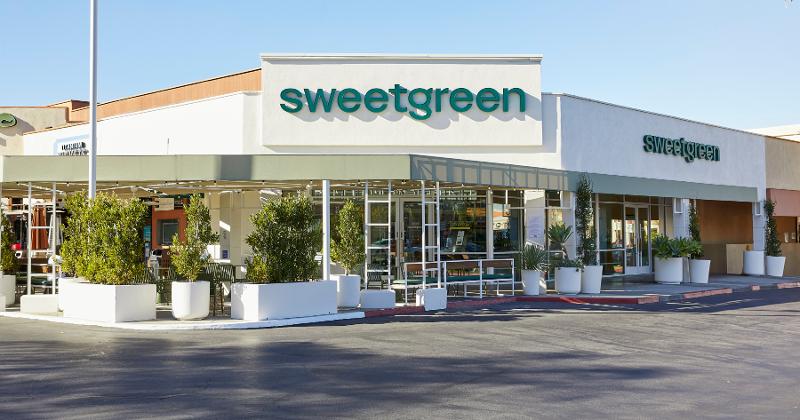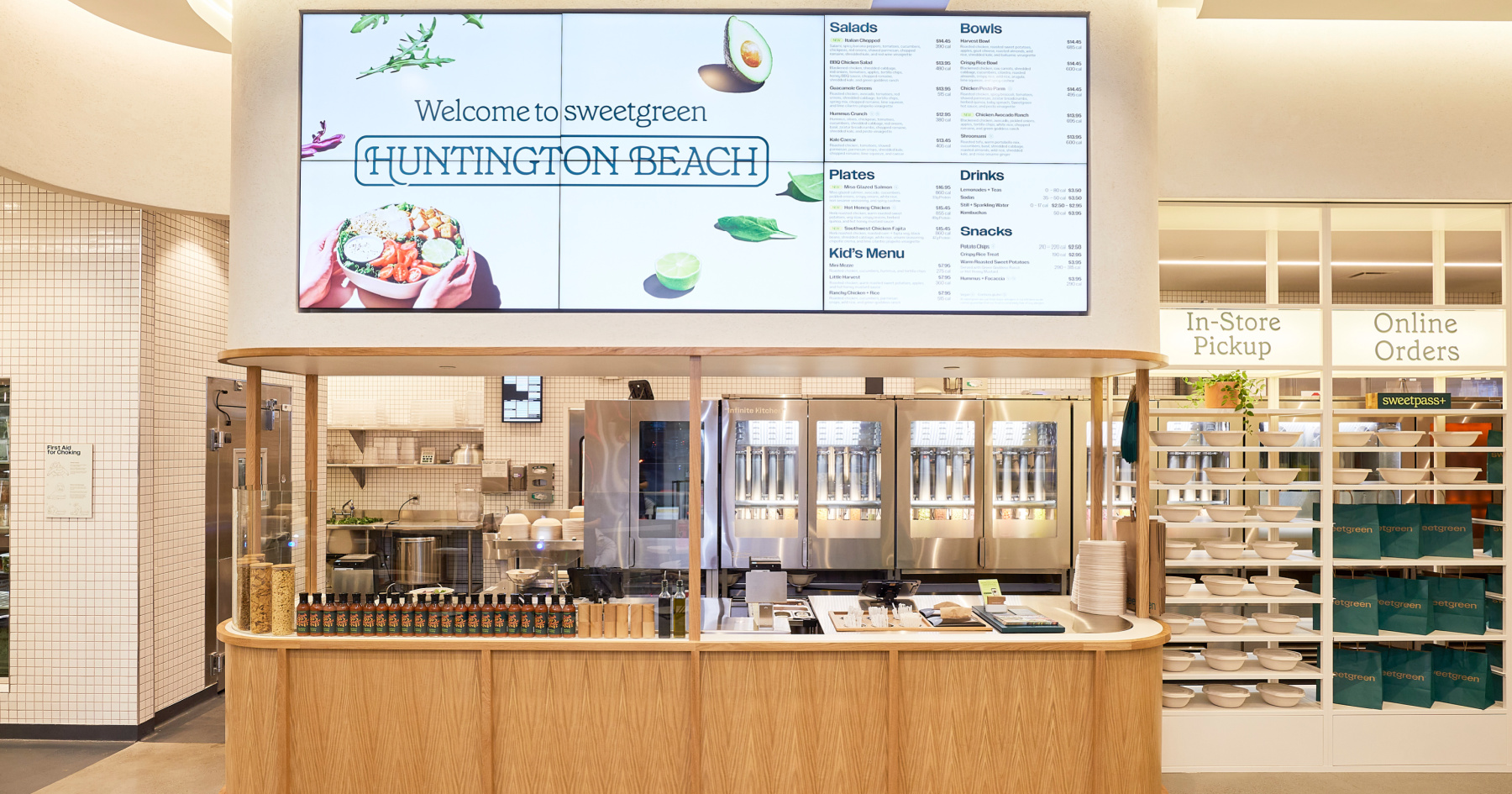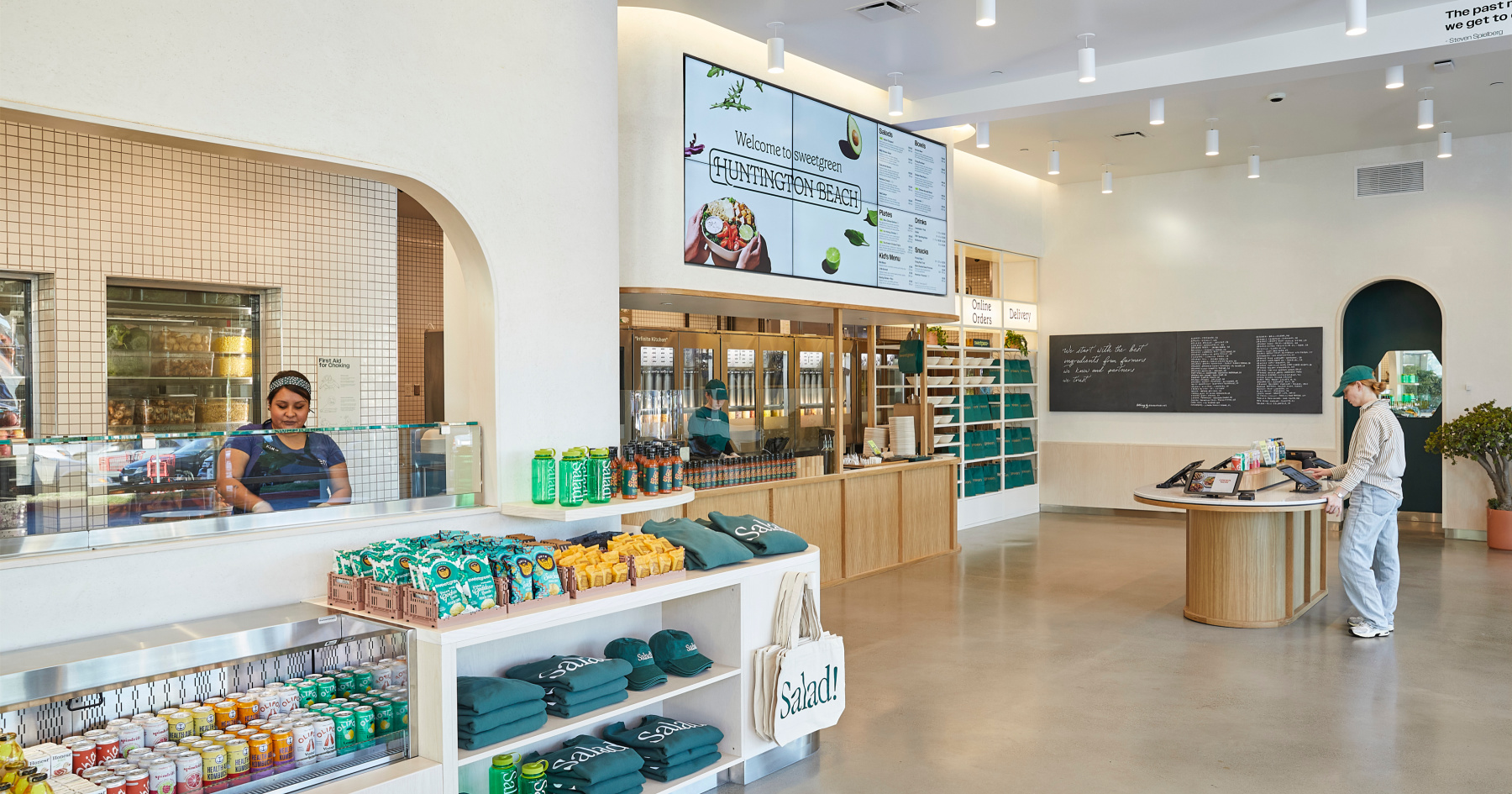
Sweetgreen’s automated Infinite Kitchen has hit the West Coast.
The fast-casual chain quietly opened the second location of its automated restaurant, dubbed the Infinite Kitchen, in Huntington Beach, Calif.
Like the first Infinite Kitchen that debuted in Naperville, Ill., earlier this year, the Huntington Beach unit features the “frictionless” automated makeline that prepares each dish—with some assistance from humans, who add final touches at the end.
Here's a look at how it works:
Company officials are already very high on results from the first unit, and next year more are planned: Sweetgreen has said between seven to nine new Infinite Kitchen units will open in 2024, which will be among 23 to 28 new unit openings overall.
In addition, two to four existing units will be retrofitted with the automated makelines to evaluate the possibility of converting restaurants that are already established. The company is planning to target high-volume urban stores.
The company’s journey to automation began in 2021, when the Los Angeles-based chain acquired Spyce, a two-unit automated restaurant created by MIT grads in Boston.
Tweaking the technology for Sweetgreen’s menu, the makeline can now prepare 400 to 500 bowls an hour.

The automated makeline does most of the work and humans add finishing touches. |Photo courtesy of Sweetgreen.
Not only are bowls produced faster, orders are also more accurate, the company said, based on results from the Naperville location.
It also requires about one-third fewer workers to operate the Naperville store, though Sweetgreen maintains that team members remain “the heart and soul of the operation.”
Though the cost of the system has not been revealed, the company said the cost will likely go down as the chain scales. Labor costs, on the other hand, are likely to keep rising, especially in California, where the fast-food minimum wage is scheduled to increase to $20 per hour in April.
“Over time, this can become a really powerful tool for us, especially as we see significant wage increases around the country,” said Sweetgreen CEO Jonathan Neman in November, during the chain’s third-quarter earnings report.
Bright and sunny, and not far from the beach, the new Huntington Beach location has a 36-seat patio and the unit is designed for quick pickup of digital orders.

Guests order at a digital kiosk. | Photo courtesy of Sweetgreen.
Since the first Infinite Kitchen opened, Sweetgreen has debuted a new menu category with Protein Plates, designed to draw more dinner business. Those plates can also be built by the automated makeline.
Neman said the company’s confidence in the Infinite Kitchen format is high.
“Our Infinite Kitchen pilot continues to deliver many benefits to our operating model, such as increased throughput, near perfect order accuracy, portioning consistency, a better team member experience, improved restaurant level margins and an accretive return on capital,” he said during the chain’s third-quarter earnings report.
The company is still studying and learning how and where the technology will best work, he added, but said, “We do expect to speed up development in 2025 and hope, based off of the base of the success of the deployment, to have a greater share of Infinite Kitchens in that 2025 pipeline.”
Members help make our journalism possible. Become a Restaurant Business member today and unlock exclusive benefits, including unlimited access to all of our content. Sign up here.